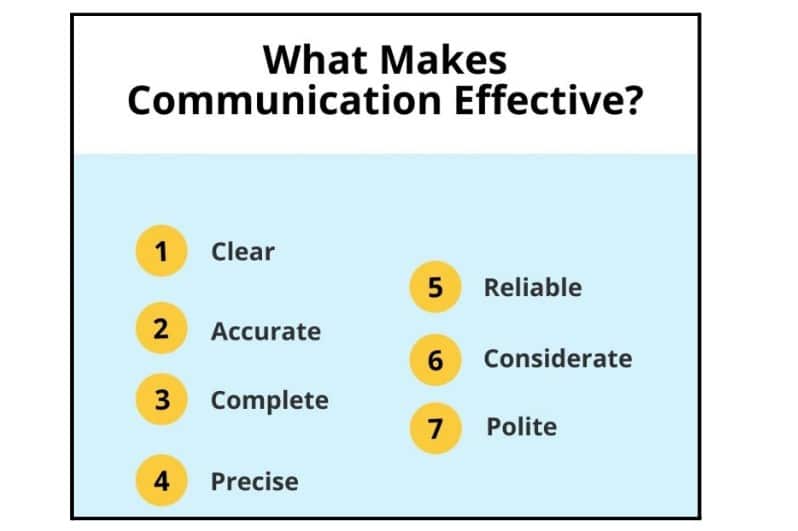A 2022 study that surveyed more than a thousand PR professionals found that almost 60 percent of them faced ethical challenges during their regular workday. Moreover, to combat these challenges, 85 percent undertook ethics training.
Considering we’re now in the golden age of digital media and AI, the ethical and moral challenges concerning the PR industry seem unprecedented. Things like sponsored content, privacy concerns, use of social media tools, etc., create the biggest host of issues.
We’re not just making vague statements about the increase in challenges, either—a 2021 study that interviewed more than two thousand PR professionals found they face more moral challenges now than they did eight years ago.
As PR professionals, it can often be difficult to combat these challenges alone as we can potentially remain in the unknown about what needs to be done next.
We want to change that, so we’re here with a few expert-backed insights on how to communicate ethically in the digital age.
Why is ethical communication so important in public relations?
Let’s be real for a moment. Every industry needs to have some ethos. We’re not the lone wolves here. This is mainly because ethos defines a brand and what it stands for, as well as builds trust with the audience.
And trust is a social currency every business needs.
Even something as simple as opening a bank account requires immense trust, considering customers often research privacy practices banks adhere to and what the online reputation of the bank has.
But for the PR industry, especially building media relationships with the right experts and parties, everything can go well, but if there’s any hint of animosity, secrets, or inauthenticity on even one party’s end, the relationships can quickly turn sour.
Truth be told, there’s only really one way to quickly remove all the hints of animosity/secrets/inauthenticity in media relations, and that’s to be as ethical as possible.
Depending on what industry you work in, publishing an annual transparency report or dedicating a page on your website to highlight transparency practices is a smart move. A good example of this is a VPN company having a transparency page highlighting that their services truly keep you anonymous.
At large, unethical communications not only affect our media relations, but they can also impact the businesses and the stakeholders we represent, especially considering our words can have immense reach.
Expert-backed insights on how to communicate in a way that builds trust and credibility
Let’s unpack some expert-backed insights on how to improve ethical communication.
1. Transparency and truthfulness are key to ethical communication
Most PR experts seem to agree that the key to ethical communication is to prioritize transparency and truthfulness.
Blair Huddy, a PR expert with more than 15+ years of industry experience, says, “With technology the way it is, brands can’t hide anything anymore, so it’s always best to be open. Otherwise, you’ll be found out, and it’ll cause a worse PR situation for your brand.”
Other experts, like Stefanie Magness, the PR agent at Elevate U PR, say you have to cultivate and nurture every interaction with transparency and truth to build credibility with your audience over time.
So, what’s the one practical way to prioritize transparency?
Michelle Mackel (publicist at Plugstar Entertainment) provides a simple tip: Communicate with your clients and network without resorting to exaggeration.
By using the best practices of effective communication, such as accuracy, preciseness, and politeness, you can effectively build and maintain trust with your clients.
For divorce mediator firms, this includes clear communication of processes, fees, and expectations, as well as ensuring the confidentiality of client information in all digital interactions.
As divorce mediation involves highly personal and sensitive matters, upholding ethical communication standards is key for fostering trust and credibility in the digital age.
Remember, honest communication is the best policy and prevents unethical behavior.
2. Protect your client’s privacy by asking for the necessary permissions
Another thing most PR experts agree on? Respecting user privacy and asking for the necessary permissions to use and share data. This is especially important at a time when you can buy large sheets of customer data for only a few dollars.
To see how this practice would translate in the real business world, we got in touch with Uku Tomikas, the CEO of Messente Communications, and he said:
“[To communicate ethically], consent is a key factor—respect user privacy by getting explicit consent before sending communications. Inclusivity is also a must—I recommend tailoring messages that are accessible and respectful for all audiences. At Messente, we’ve firsthand seen transparency and privacy reinforce brand loyalty and trust.”
3. Reconsider your partnerships with those who don’t have the same ethos
Michael Toebe, the communications specialist and consultant at Reputation Quality, says executives and middle managers should ideally model ethical communication to those they lead and with whom they collaborate and serve.
To them, he recommends taking a stand that shows ethical communication is the non-negotiable standard and you won’t pay trust taxes in the long run.
Adding to this insight, he said, “Disinvest from those, including leadership, that won’t engage and communicate in this manner. It will save you a flimsy standard, risk, embarrassment, and inevitable, costly consequences for shortcomings or failure.”
4. Think about not only your clients but also the end user
Oftentimes, when we communicate with our audience, we only consider our direct audience.
However, our focus should be on our audience (aka our customers) as well as the customers’ audience— and that’s the argument of Vicki Bohlsen, the founder of Bohlsen Group, a marketing and PR firm.
She recommends finding the end audience for all communications and crafting your content accordingly. For example, if they’re members of the media, consider how your story will connect with their audiences.
In her own words, “The single most important factor in all communications is emotional intelligence—aim for honest, vulnerable, open communication geared individually to each stakeholder audience.”
5. Lean towards using authentic content, even with AI on the rise
Emily Bergh, the founder of R Public Relations, says that it’s time for the PR industry to bring back the practice of meeting people in real life and building those connections organically, as opposed to leaning on AI tools to create communication scripts on our behalf.
She also highly recommends:
- Going back to basics, developing connections over phone calls, and building brand trust through the traditional route.
- Relying on authentic content and not using solutions like ChatGPT.
Media communications might look easy, but we all know a lot goes behind building and nurturing those relationships
For example, battling challenges like communication ethics is a big one. But you might also go through challenges like:
- Not having critical contacts or not being able to identify the right stakeholders
- Difficulty in assessing brand insights, reputation, real-time crisis, etc.
- Not knowing all the potential risks associated with all media actions
- Being unsure about audience sentiments regarding your clients
- Constantly staying updated (and monitoring) brand mentions
For these solutions, look into services for media monitoring, risk intelligence, media databases, social listening, and media intelligence.










